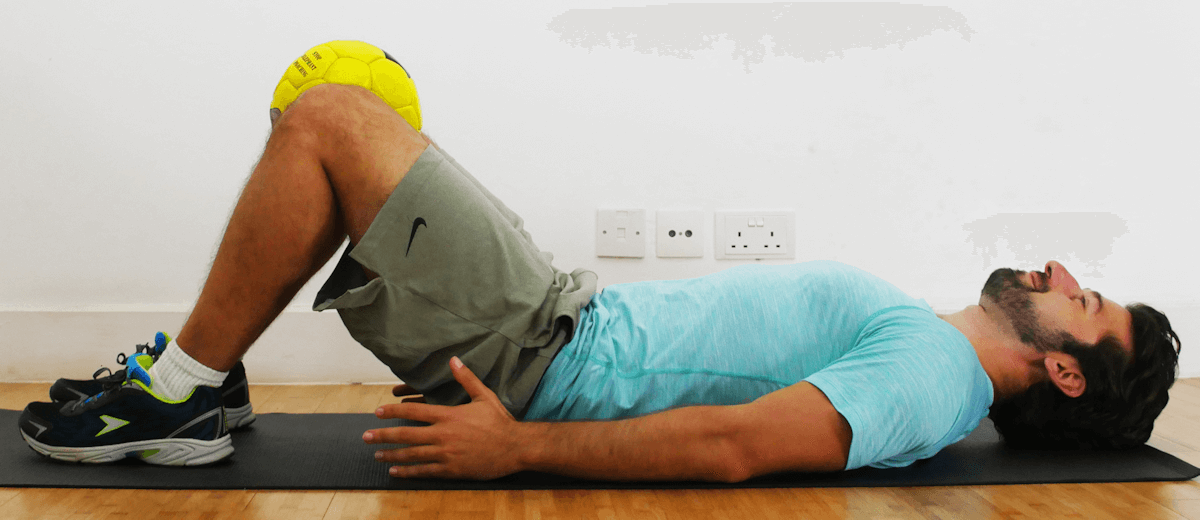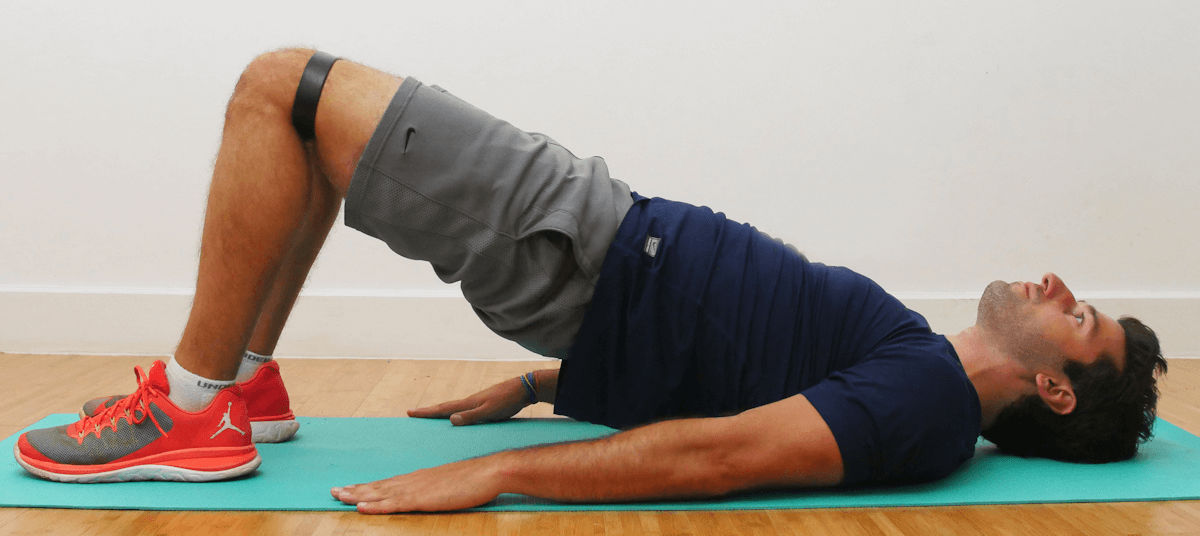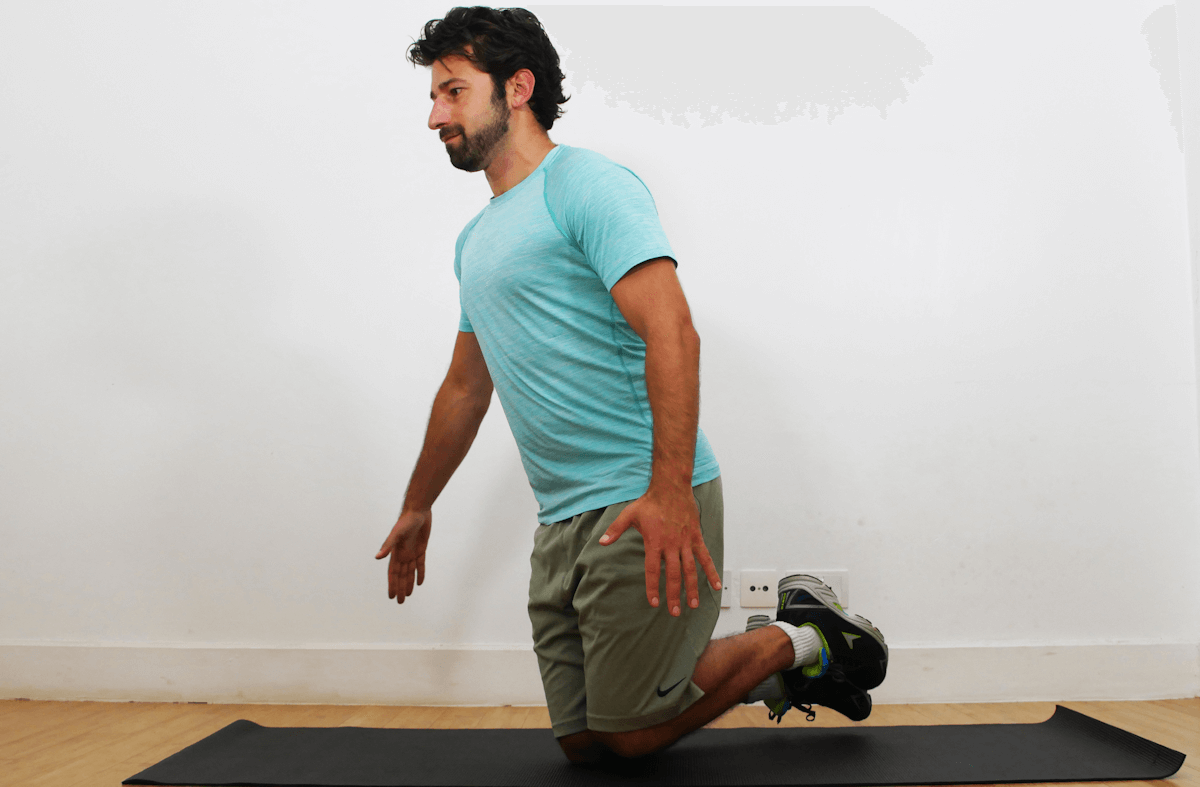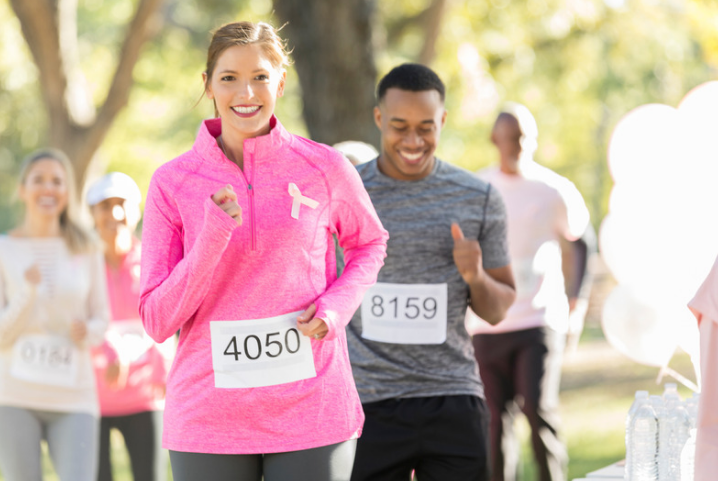"Running can introduce between three to 10 times the athlete's bodyweight in force through the lower extremity," says Taylor Weglicki, Ph.D., a physical therapist and coach with Complete Human Performance. If your running form is bad, your body's movement patterns or your posture
Poor posture patterns can affect every function your body performs each day and, experts say, is a major contributor to chronic aches and pains. Statistics from the Centers for Disease Control and Prevention and the National Center for Health Statistics showed that knee and low back pain affect 19.5 and 28.1 percent of Americans, respectively.
When you run—and put that triple force into the ground over and over—
But first, remember: Pain is a stop sign. These exercises can help with
Posture Issue: Forward Head
What it is: A forward protrusion of the head at rest, often paired with "thoracic kyphosis," a condition where your shoulders are rolled forward. In proper alignment, a standing person viewed from the side should show a straight line down from their ear through the shoulder and arm to the waist.When someone has a forward head posture, the ear (and thus the head) will jut forward, so the head is no longer in line with the shoulder and spine. Not only is it not an attractive posture, forward head can cause neck strain, back pain, can affect your balance, and, for runners, it can "negatively affect breathing capacity and efficiency," Weglicki says.
For many, forward head is caused by the activities of daily life—sitting hunched over in a chair to watch TV or work on a computer all day is a constant practice that encourages rolled shoulders and a forward head.
"For those who work on computers, making sure the monitor is in line with the top of your head will help prevent the athlete from straining forward—and encouraging forward head—as they try to read text up on the screen," says Weglicki.
Do I have it?: Probably! Besides being caused by office work and poor sitting posture, smart phone usage has caused reports of "text neck," where hunching over the phone has increased this posture. But if you're not sure, stand up straight and ask someone to take a photo of your side view. See if you've got a straight line from your ear down through your shoulder to your waist. If your head is forward, you've got forward head.
What can I do?: For starters, work on how you sit. Experts in ergonomics and posture recommend sitting with your hips even with or above your knees, and Weglicki suggests making sure the screen is in line with the top of your head. While seated, occasionally put your attention on your posture: "I recommend folks focus on placing the shoulder blades in the back pockets," he says, pulling the shoulder blades slightly together and down towards the butt. "This scapular setting will encourage a more
He also suggests a simple breathing technique exercise. To do it, lay flat on your back with a pillow or
"Focus on drawing breath in and towards your feet each inhale," he says. "You'll often see rib cage elevation, or lumbar extension as compensation, but with focus on technique and cuing yourself to relax, the breathing will normalize."

Posture Issue: Rounded Spine and Hunched Shoulders
What it is: This is "thoracic kyphosis," which can be caused by osteoporosis, cancer and other things, but like forward head, is often caused by sitting too much while hunched over.A rounded spine like this is both caused by and results in weakened rhomboids and mid-
Do I have it?: Not sure if your shoulders are rounded? Look in the mirror and stand normally. If the tops of your hands are facing forward, in a caveman "knuckle-dragger" posture, it's the result of forward rolling of the shoulders.
What can I do?: Feilders suggests performing a basic prone back extension. To do it, lie

Posture Issue: Internally Rotated Hip
What it is: When your hip is internally rotated, one of your legs is basically twisted at the femur, says Aaron Brooks, a biomechanics expert and the owner of Perfect Postures in Massachusetts."With one hip internally rotated, the lower leg will swing around to achieve ground clearance, [and] the hip will internally rotate even further upon ground contact," he says. This can cause an excessive pronation, or inward roll of the foot and ankle, which can flatten your arches and cause injury due to an inability to properly distribute the shock of landing. An internally rotated hip can also cause valgus stress on the knee, Brooks says—when you're knock-kneed, that's valgus stress, which puts the runner at risk for ACL and patella injuries, among other things.
Do I have it?: If you don't notice yourself having a knock-kneed landing when you run, you can check in the mirror. "Look to see if the
If it is, you probably have an internally rotated hip, he says. You may also notice on this leg that "because of the internal rotation, there will typically be excessive pronation of the foot and ankle partly due to the foot toe-out in conjunction with the internal hip."
What can I do?: Brooks recommends two exercises that can help. The first is a prone ankle squeeze. Lie on your stomach, palms down and chin resting on the hands. Place a pillow between your ankles. Bend your knees to a 90-degree angle, still holding the pillow between your ankles. In this position, squeeze and release the pillow using only the ankles. You should feel a contraction in the buttocks. If not, widen your knees slightly. Remember to focus on the ankles and not the buttocks as you squeeze the pillow. Perform three sets of 20 squeezes.
Next, try a strapped-
Posture Issue: Leg Length Disparity
What it is: In short, when one leg is longer than the other. This isn't your fault, but it can make running more hazardous for your joints, according to Brooks."[As you run,] you would
When you're running, "you would see a subtle limp," Brooks says. "On
Do I have it?: Take a look in the mirror, Brooks says. Look to see if one pant leg looks longer than the other, or if your belt line is parallel to the floor.
What can I do?: You probably can't "fix" this disparity, but there are exercises you can do to reduce the pegging and short leg shocks by dealing with the elevation of your pelvis. Brooks recommends trying two exercises, which can be done with your lower legs elevated on a couch or box. Try them daily.
The first is a neutral pillow squeeze with neutral back. To do it, lie on your back with the knees at a 90-degree angle on a block or chair. Keep your hips square on the floor. Place a pillow between your knees and, using the inner thighs, squeeze and release the pillow. Use both knees evenly. Perform three sets of 20 repetitions.
Next, try knee presses in the same position. Lie on your back with knees bent to 90 degrees on a block or chair. Your knees should be together and feet a little wider than hip-width apart. Tie a belt around your thighs. Press the knees out to the sides and relax, trying to spread the knees apart. Perform three sets of 20 repetitions.
Posture Issue: Trendelenburg of the Hip (or Hip Drop)
What it is: When running and landing on one leg, "the unweighted hip drops significantly lower than the stance hip," says Weglicki. So, when you're landing on the right leg, your left hip winds up dropping below the line of the right hip, as seen in this slow-motion video. Do I have it?: Unless you're significantly weak, it's difficult to tell when you're just standing, Weglicki says. "Often you have to film the individual walking or running to get a better idea of what is happening," he says. Grab your phone and ask a friend to film you running away, preferably in slow motion. If your hip acts as seen in the video above, you may have weak
What can I do?: Strengthen that booty! Try a


Even more important than strengthening the buttocks, though, is "encouraging the coordination of musculature in the area," Weglicki says, so that your butt works with your hips and adductors correctly. To encourage this, Weglicki suggests an exercise where you "kneel on one knee like you're trying to kneel on a tightrope. Do your best to hold
This can also act as a sort of test for hip drop: "Compare each side to see which is worse, and note if the weaker side correlates with the side that is having more pain."

If you've been bitten by the running bug, there's nothing worse than letting bad form put you on the sidelines.













